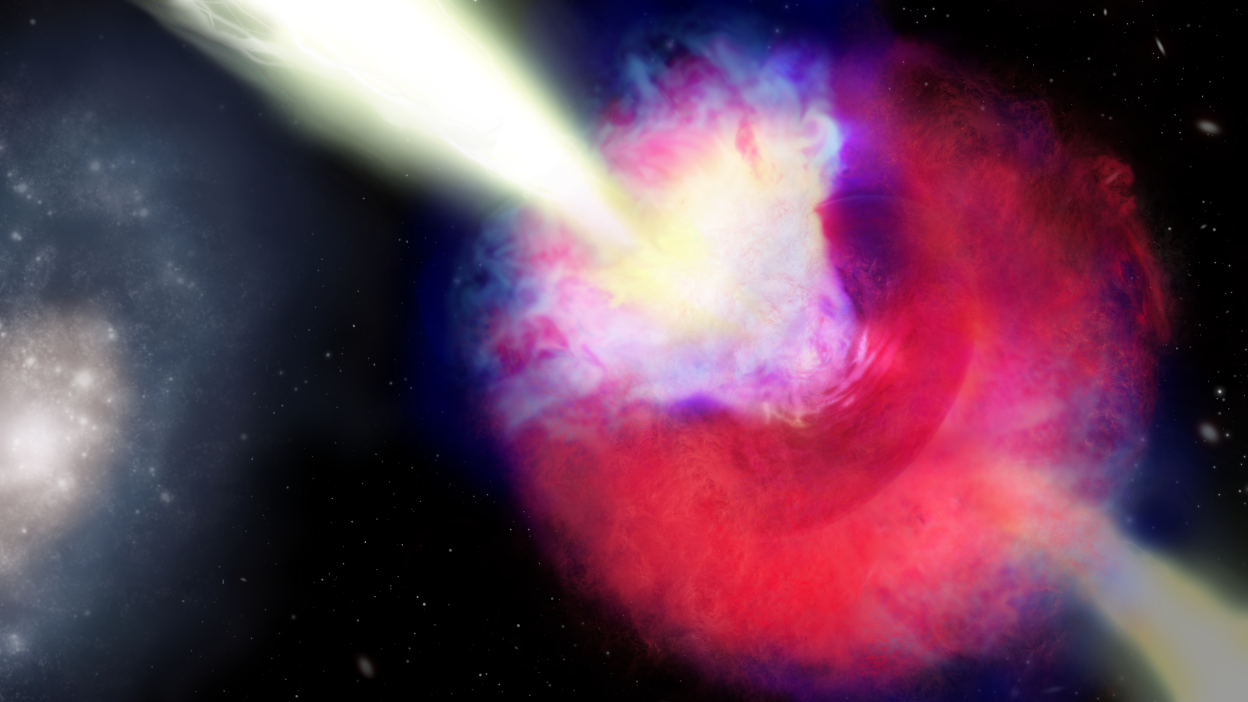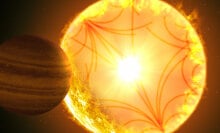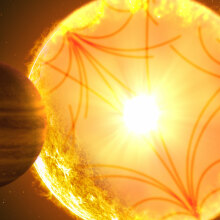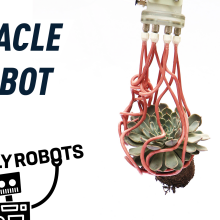Scientists thought they had a few things figured out about the brightest and most violent space explosions humans have ever seen until the universe handed them a powerful flash that didn't play by the rules.
Telescopes, including NASA's Neil Gehrels Swift Observatory, detected a long gamma-ray burst, the most energetic form of light. Experts would normally expect such a blast to come from a supernova, the last hurrah of a dying massive star. Instead, the data showed a so-called "kilonova," a much dimmer afterglow typically associated with a short burst of a couple of seconds or less. Kilonovas tend to result from crashes of dead-star remnants.
The new findings, published in studies in the journal Nature, conducted by separate teams using independent data, are the first time a kilonova has been connected to a long-burst signal. The event throws a wrench into previous scientific thinking on how these dying-star explosions occur, and may hint at where astronomical factories for heavy metals, like gold, can be found.
Research groups were immediately interested in this odd, long gamma-ray signal, known as GRB 211211A, because of its relatively close location. The burst, which lasted about a minute on Dec. 11, 2021, was in a galaxy only 1 billion light-years from Earth, meaning the light traveled for a billion years through space before reaching the telescopes' sensors. That may seem extremely far, but most have come from between 6 and 13 billion light-years away, from the time of the early universe.
”We were able to observe this event only because it was so close to us,” said Eleonora Troja, an astronomer at the University of Rome Tor Vergata, in a statement. “It is very rare that we observe such powerful explosions in our cosmic backyard, and every time we do, we learn about the most extreme objects in the universe."
Some astronomers now think this unusual gamma-ray signal could have formed when a neutron star and a white dwarf star, remnants of different-sized dead stars, collided.
Want more science and tech news delivered straight to your inbox? Sign up for Mashable's Top Stories newsletter today.
The observation may change how astrophysicists approach the search for heavy metals, such as platinum and gold, in the future. While lighter elements — helium, silicon, and carbon — have been somewhat easy to find and study in space, finding the sources of heavy metal production has been harder. Astrophysicists think they come from dying-star explosions, but clear signs of their creation are rarely observed.
The radioactive breakdown of some of the heaviest elements is what powers kilonova explosions, said Jillian Rastinejad, who led one of the studies at Northwestern University.
“But kilonovae are very hard to observe and fade very quickly," she said in a statement. "Now, we know we can also use some long gamma-ray bursts to look for more kilonovae.”































